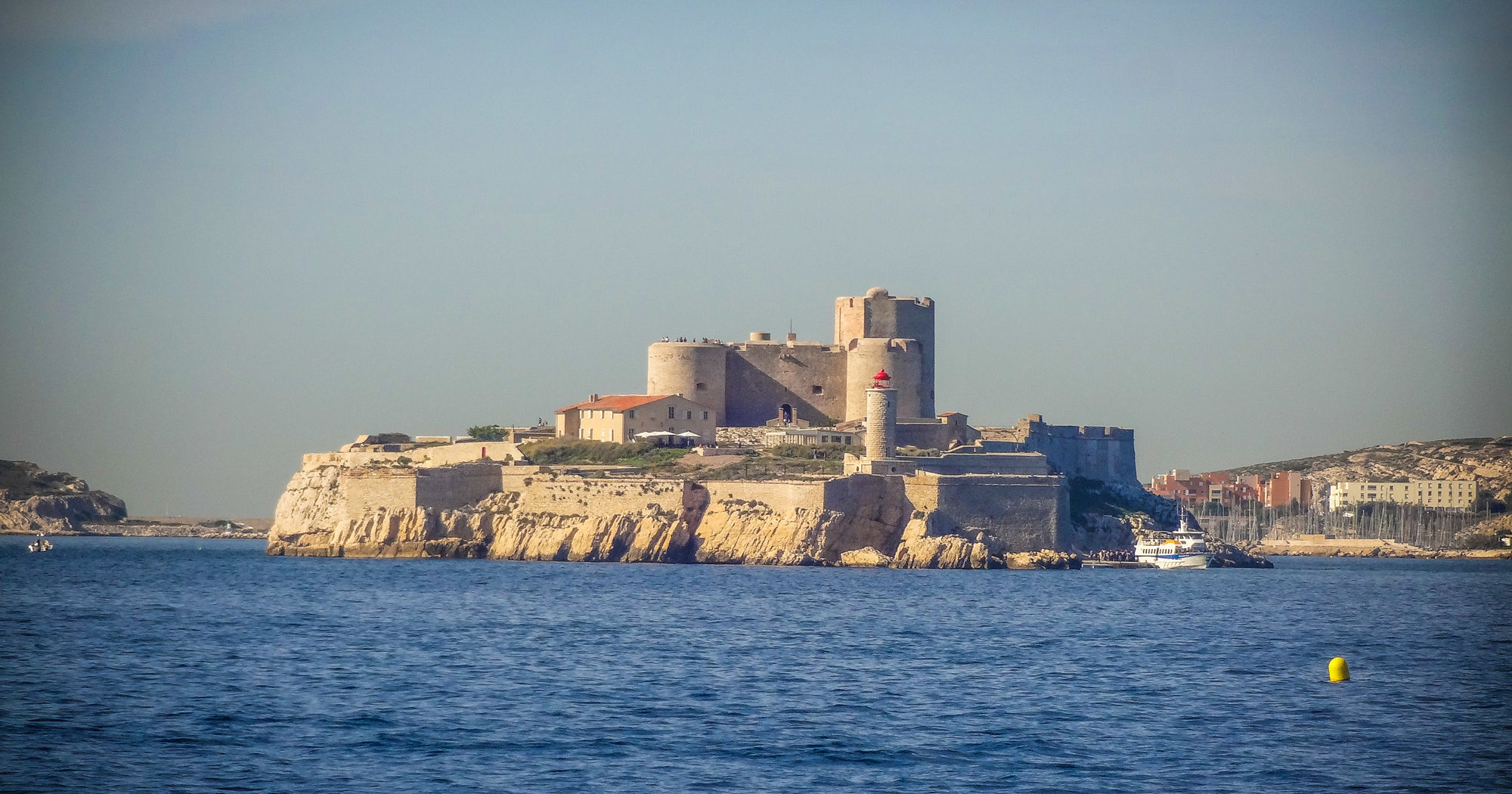
The Château d’If: Myth and Reality
The Château d’If, perched on a small rocky island off the coast of Marseille, is one of France’s most famous fortresses. While its real history is as fascinating as its legend, it is primarily thanks to literature and cinema that this site became world-renowned. Immortalized by Alexandre Dumas in the novel Le Comte de Monte-Cristo, the Château d’If holds a significant place in the collective imagination. But before becoming a literary icon, this prison already housed captivating stories of resistance and captivity.
A Little History: The Construction of the Château d’If
The Château d’If was built in 1524 under the orders of François I to defend Marseille against invasions. It was part of a broader strategy to protect the port city from external enemies. The fortress, located on the island of If, features imposing military characteristics with its cylindrical towers and stone walls, designed to repel maritime attacks. However, despite its defensive role, the Château d’If was never attacked and quickly became a state prison.
Famous Prisoners of the Château d’If
The Château d’If is best known for having housed famous prisoners, many of whom were political or religious opponents. Among the most notable were the Huguenots (French Protestants) in the 16th century, imprisoned due to their religious beliefs. During the French Revolution, the castle also served as a detention site for political adversaries.
One of the most famous prisoners of the Château d’If was undoubtedly General Jean-Baptiste Kléber, a hero of the French Revolution, whose body was kept in one of the castle’s cells before being transferred to Strasbourg. Although its role as a prison has often been depicted as oppressive, the Château d’If was also a place of secret resistance and clandestine networks, creating a space filled with tragic and heroic stories.
The Château d’If in Literature: Le Comte de Monte-Cristo
It is in the novel by Alexandre Dumas, Le Comte de Monte-Cristo, that the Château d’If truly takes a place in the collective imagination. The fictional story of Edmond Dantès, unjustly imprisoned in this fortress, and his daring escape, made the Château d’If a symbol of injustice and revenge. This novel, first published in 1844, quickly became a worldwide classic. Discover how this historical link continues at La Girelle.
In Dumas’ work, Dantès meets Abbé Faria in the dark cells of the castle, and it is Faria who reveals to him the existence of a hidden treasure on the island of Monte-Cristo. This treasure allows Dantès to return as Le Comte de Monte-Cristo and execute his plan of revenge against those who betrayed him. Although the story is fictional, it contributed to the popularization of the Château d’If and attracts thousands of tourists to the island every year.
The Château d’If in Cinema
The Château d’If has also been an iconic setting in numerous film and television adaptations of Le Comte de Monte-Cristo. The 2002 film, directed by Kevin Reynolds, and more recently the 2024 adaptation starring Pierre Niney, have managed to capture the dramatic essence of the castle and the sense of isolation it embodies. The image of the Château d’If as a prison, reinforced by its thick walls and solitary position in the sea, has become a cinematic symbol of captivity and revenge.
Visit the Château d’If Today
Today, the Château d’If is a major tourist attraction. Accessible by boat from the Vieux-Port de Marseille, visiting the island and the fortress allows you to discover both its real history and the legends surrounding it. Visitors can explore the old cells, some of which are dedicated to Le Comte de Monte-Cristo, and enjoy stunning views of the Mediterranean.
Whether you are a history enthusiast or a literature lover, the Château d’If will immerse you in a fascinating world where reality and fiction meet. Be sure to explore this history-rich fortress and relive the adventures of Edmond Dantès on your next visit to Marseille.



